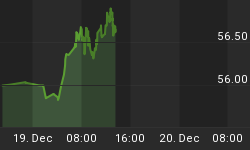"You will be lucky to get 6% on your portfolios, maybe 5%," according to Laurence Fink, Chief Executive of the giant funds manager BlackRock, speaking before the directors of CALPERS, as quoted by The Wall Street Journal. BlackRock manages over $3 trillion in investments. CALPERS is the nation's largest public employee pension fund. Fink was making this projection of annualized total returns expected over the next decade to sophisticated financial professionals who are counting on a 7.75% return in their actively managed fund, based on historical models. Compounded over time, the difference between these two projections is dramatic.
Bill Gross, CEO of PIMCO, the largest bond fund in the nation, made a similar projection last August when he coined the term "the new normal" to describe the economic environment going forward. He predicted that "investment returns [will] gravitate close to 6% as envisaged by PIMCO's 'new normal.'"
It is important for investors to understand why credible financial leaders such as Gross and Fink are saying that rates of return will be subdued in this coming decade.
In April, 2009, Gross explained in his widely read monthly commentary that deleveraging would make this time different:
The prior half-century of leveraging and the development of the amorphous shadow banking system was growth positive. Major G-10 economies became dominated by asset prices and asset-backed lending most clearly evidenced in housing markets. Excess consumption was promoted, and investment based on that consumption followed in turn. Savings rates in many countries including Japan, the U.K., and the U.S. fell towards zero as the reliance on rainy day thrift faded. Deleveraging of business and household balance sheets now means those trends must reverse, and as they do, growth itself will slow, bolstered primarily by government spending as opposed to the animal spirits of the private sector.
He concluded, "There is a near certain probability that the financially based global economy of the past half-century will not return, nor will we experience the steroid driven growth excesses that it facilitated."
The deleveraging will result from financial institutions and investors taking fewer risks in order to avoid a repeat of the catastrophic losses in the 2008-09 meltdown, banks doing less lending as bank balance sheets remain impaired, regulators limiting the risk financial institutions will be able to take on, and consumers saving more and borrowing less. In short, lending will grow at a slower rate than we have experienced over recent decades.
Hilda Ochoa-Brillembourg, formerly chief of the World Bank's pension division for 11 years, predicts future returns similar to those Fink and Gross predict. She is convinced that the returns of the period between 1982 and the market peak in 2007 were extraordinary, driven by the ability to leverage cheap, borrowed money into higher profits.
From 1982 to 2008, the Federal Funds rates fell from 20% to effectively zero. Interest on 30 year home loans exceeded 16% in 1981 and 1982. It is currently about 5%.
Ever falling interest rates increased asset prices by lowering borrowing costs. As Gross makes clear, we have experienced asset inflation (including stock and bonds) driven by progressive easing of monetary policy. Take home prices as an example. Home prices soared at historically unprecedented rates in the past quarter century, according to Yale Professor Robert Schiller. Part of this increase was certainly due to favorable demographics - the baby boom bulge. But a major part was due to the fact that buyers could buy more expensive homes as interest rates fell, and people who never before would have been able to afford homes suddenly could. For example, in 1990 the rate on a 30 year fixed loan averaged 10.13%. The monthly payment on a $300,000 loan at 10% is $2631. At the current 5%, the borrower pays only $1610 per month.
The huge growth in the value of homes in the United States facilitated consumer spending and GDP growth in a variety of ways. Homes are the largest asset owned by most Americans. As they climbed in value, consumers felt wealthier and more inclined to spend. For millions of homeowners, the increase in home values became a piggy bank, which they accessed for a wide variety of purchases. Going forward, home price increases will be driven by fundamentals such as the rate of household formation and income growth rather than lower interest rates.
Lower interest rates will no longer contribute to higher home prices because, with the Federal Funds rate effectively zero and ten year treasuries having averaged 3.5% over the past year, it is highly probable that we have come to the bottom/end of the long virtuous credit cycle that began in 1982. Lurking in the background is the prospect of higher treasury rates to fund our huge deficits. Such an increase would drive all borrowing costs higher. As a result, increases in home and other asset values will be more restrained.
The takeaway for investors is that most models of future net worth and income streams are based on historical trends and are overly optimistic. It is not merely many public pension funds that are projecting returns of 7.75% to even 8.5%. Many retirement projection models use the same optimistic assumptions. Those who rely on these models are likely to be disappointed.















